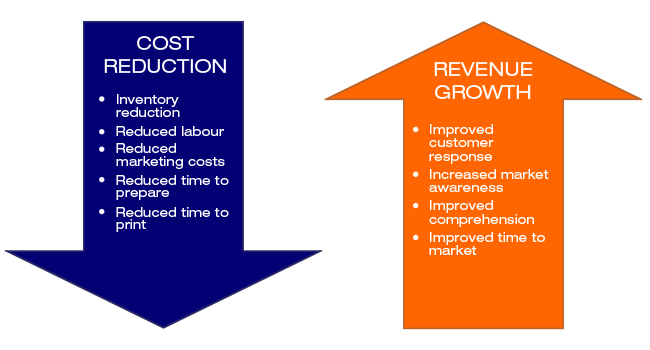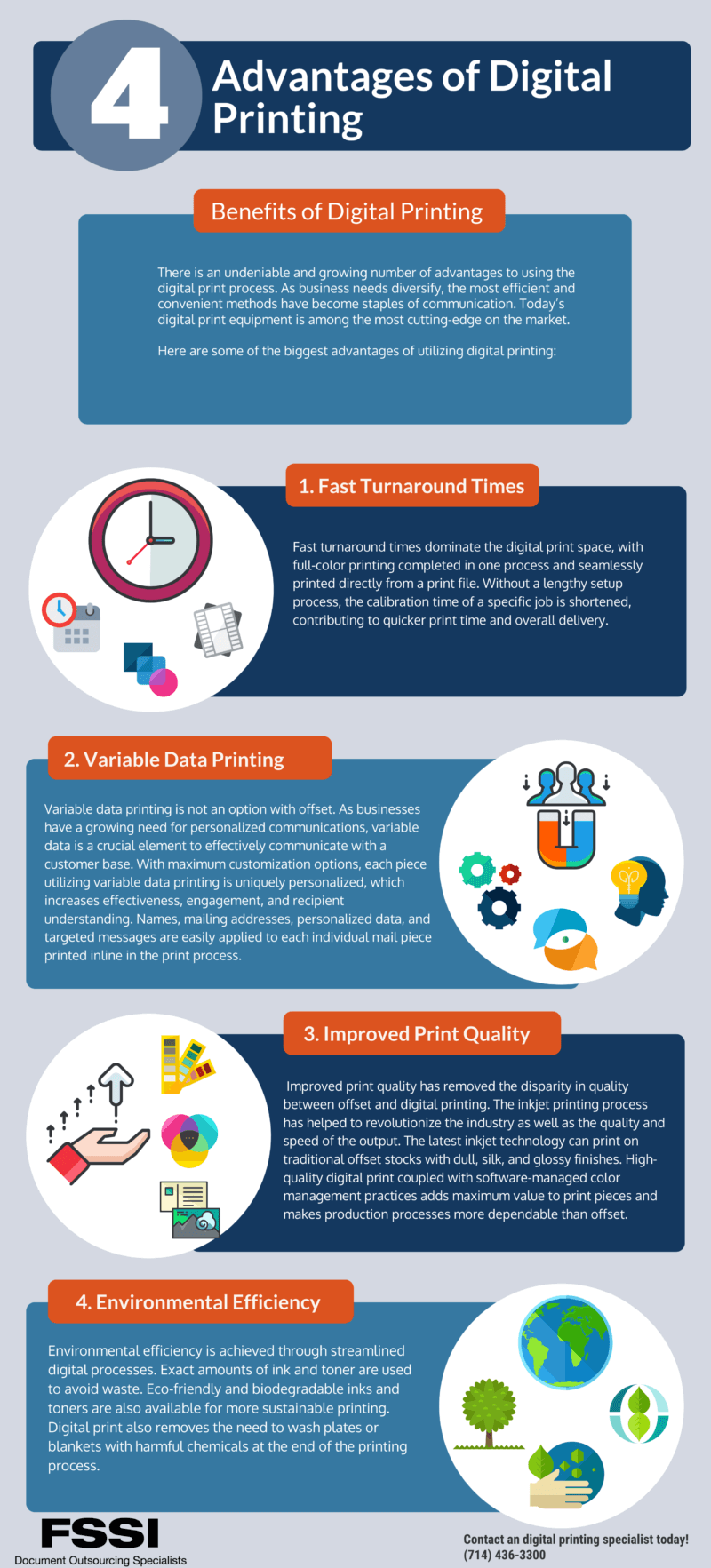The Basic Principles Of Digital Printing
The Basic Principles Of Digital Printing
Blog Article
About Digital Printing
Table of ContentsDigital Printing Can Be Fun For EveryoneFascination About Digital PrintingDigital Printing Fundamentals ExplainedSome Of Digital PrintingWhat Does Digital Printing Mean?Digital Printing Can Be Fun For Everyone
Variable information printing, such as direct mail with personalized codes and addresses, is ideally matched for digital printing. Digital quick printing just requires four actions of layout, evaluation, printing and binding to obtain everything done. Digital quick printing has an unmatched advantage: print on demand.According to PMMI, electronic printing allows brands and producers to react promptly to customer demands while improving the supply chain, minimizing warehousing expense and waste, and delighting in faster time to market. That all noises excellent, however just how does this modern technology do all that? The significant differentiator of these technologies is that there are no set-up fees and no plates with electronic printing.
The Buzz on Digital Printing
According to Wikipedia, the best difference in between electronic printing and standard methods such as lithography, flexography, gravure, or letterpress - Digital Printing is that there is no need to change printing plates in electronic printing, whereas in these analog printing techniques the plates are continuously changed. This results in quicker turn-around time and decreases expense when using electronic printing.
Digital printing is very versatile, so it's very easy to make modifications to the plan style quickly. It all goes back to the plates.
Extra inventory can imply more waste later on. With traditional printing approaches, short-run printing is just not feasible. Because a terrific layout can make or break your item, electronic printing regularly creates high-quality, clear and vibrant graphics each time. Digital printing on adaptable pouches adds the intense, vibrant, and exact graphics that practically beckon customers to reach out and touch them.
Digital printing is the process of printing digital-based photos straight onto a variety of media substrates. There is no requirement for a printing plate, unlike with balanced out printing. Digital documents such as PDFs or desktop computer publishing files can be sent out directly to the digital printing machine to print on paper, picture paper, canvas, material, synthetics, cardstock and various other substratums.
What Does Digital Printing Do?
According to PMMI, electronic printing permits brands and suppliers to respond rapidly to client demands while improving the supply chain, reducing warehousing cost and waste, and delighting in faster time to market. That all sounds great, but exactly how does this technology do all that? The major differentiator of these innovations is that there are no set-up fees and no plates with digital printing.
This results in quicker turn-around time and decreases expense when using digital printing.

Some Of Digital Printing
With traditional printing approaches, short-run printing is just not feasible. Since a great style can make or break your item, digital printing regularly produces premium, clear and vivid graphics each time.

According to PMMI, digital printing enables brand names and manufacturers to respond promptly to customer demands while improving the supply chain, decreasing warehousing price and waste, and enjoying faster time to market. That all noises great, however just how see here does this technology do all that? The major differentiator of these innovations is that there are no set up fees and no plates with digital printing.
9 Easy Facts About Digital Printing Explained
This results in quicker turnaround time and lowers price when making use of electronic printing.
Digital printing is highly adaptable, so it's simple to make changes to the plan design swiftly. It all goes back to the plates.

The Single Strategy To Use For Digital Printing
Digital printing is the process of printing digital-based photos directly onto a selection of media substrates. There is no requirement for a printing plate, unlike with offset printing. Digital files such as PDFs or desktop computer posting files can be sent out straight to the digital printing machine to print theoretically, image paper, canvas, fabric, synthetics, cardstock and various other substrates.
Report this page